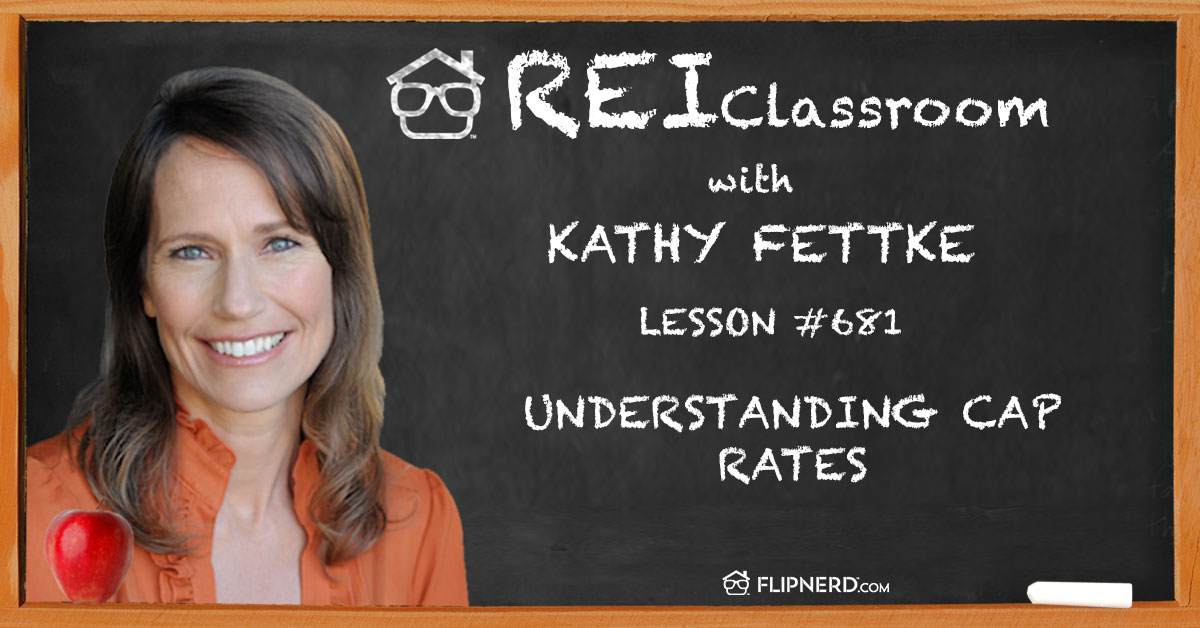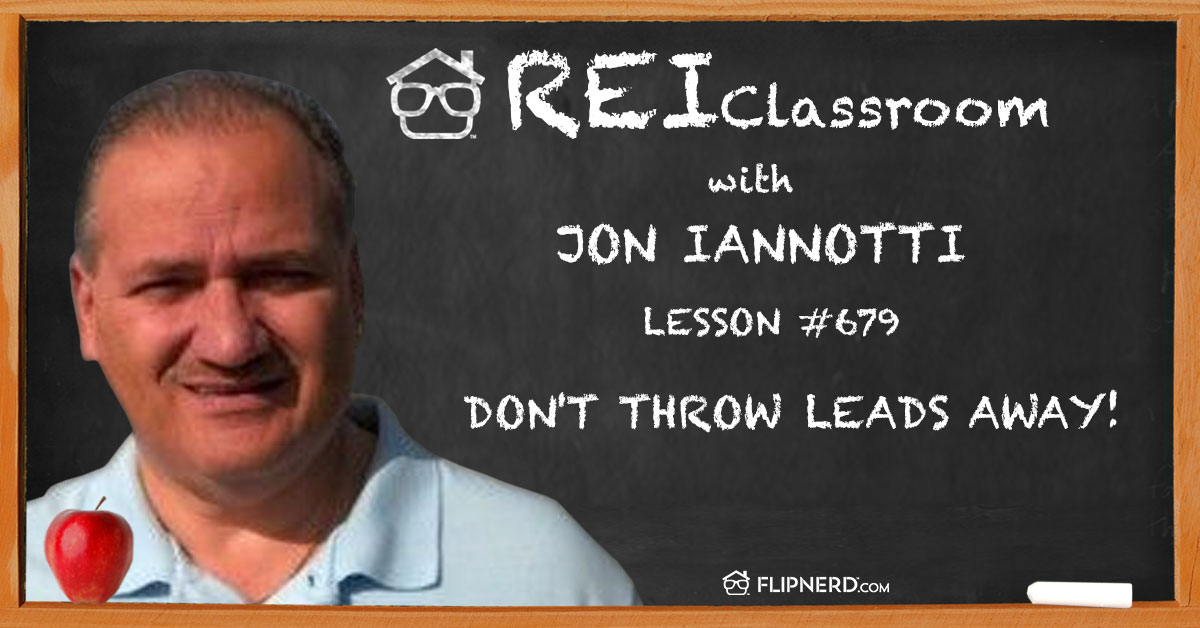Today’s REI Classroom Lesson
Today, Darrell Kucan talks to us about analyzing your vision for real estate investing, including goals you have for yourself.
REI Classroom Summary
Darrell Kucan elaborates on how creating a detailed business plan can help you succeed within real estate investing. By noting strategies in marketing, acquisitions, rehabbing, etc., you can set yourself up for success.
Listen to this REI Classroom Lesson
Real Estate Investing Classroom Show Transcripts:
Mike: Welcome back to the FlipNerd.com REI Classroom, where experts from across the real estate investing industry teach you quick lessons to take your business to the next level. And now, let’s meet today’s expert host.
Darrell: Hi and welcome. My name is Darrell Kucan and I’m your host today for the REI Classroom. Today we’re going to actually talk about your business vision.
Mike: This REI classroom real estate lesson is sponsored by AceBusinessFunding.com.
Darrell: What does that mean? Actually simply put, it’s what your vision is of your business. When figuring out what you want to do in your business, in your entrepreneurial endeavor, whether it’s wholesaling, fix and flips, anything to do with real estate, a real estate agent, a broker, whether you want to be a land developer, commercial developer, this really applies to everybody. I really have to stress the number one question you really need to be asking yourself is why?
Tonight I want you to go home, you may have done this before, but do it again. Why are you doing this business? It needs to be something you’re really, really passionate about. When you come up with answers like, “because I want to make a million dollars,” okay, that’s fantastic. Dive deeper. Ask again, why do I want to make a million dollars? Is it because you want to spend time with your family or is it because you’re sick and tired of your boss and you want to get out of there? But that has to be something that you need to figure out.
So really dive into this and visualize. That’s so important in being an entrepreneur, is visualizing the end product. What do you want to see happen in a year or five years down the road? When do you want to retire? What do you want to do in retirement? And really have those big giant visions in your head. That’s what’s going to drive you to be successful in this business, is chasing that dream and chasing that why.
So like I said, sit down tonight, ask yourself why and write down a list of reasons why you’re doing this. And it could be several reasons and that’s great. It should be more than one reason.
Your goal in creating your business vision is, again, the end product, right? What will your business look like when you’ve achieved these goals? So start out.
One of the things that we like to do is write a business plan. And actually there’s two things that you should start out with, is write a business plan and have an executive summary. And there’s two good reasons for doing this.
The first reason of writing a business plan is basically it’s your road map. It’s going to help guide you and direct you towards the end. It’s really hard without your new cell phones and Google Maps to get from one direction to another, especially nowadays. Before we literally had a paper map we’d have to open up an follow, but if you didn’t have a map, if you didn’t have your phone, how would you get from here to New York? Sure, there’s some directions to follow, but if you have a certain guide and a certain place to go, you can map that out. What are going to be the stops along the way? What needs to happen in order to get from point A to point B?
Your business plan should entail the marketing aspects of it, how you’re going to, if you’re a fix and flipper, how you’re going to acquire the properties, at what price are you going to acquire these properties and that? What are you going to be doing to these products to add value to them, so you can exit the property? What is your exit strategy going to be? Is it going to be the whole property? Is it going to be to develop a piece of land and get it entitled and ready to build and then sell that product over to somebody who’s going to construct it?
The executive summary side of it is pretty interesting. It’s really just a synopsis of who you are, where you came from, what you’ve done, and it’s an introduction so people can understand who you are. There’s another reason why you need to write an executive summary. Because if you’re not there yet but you say, “I’m a CEO of a corporation that does fix and flips, that makes . . . and come up a million dollars a year,” and if you’re not there yet, you don’t need to still lie about it, but if you’re not there yet, what that’s going to do is in your head.
It’s about a mindset. It’s in your head. You’re going to become that person. Even if you’re sitting at your desk and you haven’t made million dollars yet, that executive summary is going to be there in your head and I am a CEO, I am good at what I do and I am going to be able to provide value to the people that I work with.
I really like the show . . . I can’t think of it right now – The Profit. It’s about people, it’s about process and it’s about product. This business has really nothing to do other than people. You’re dealing with people. So get really good at dealing with people.
If you’re not good at dealing with people, find somebody who is and partner up with them and team up with them. The product that you’re doing, it depends on what aspect of the game you’re in. You could be on development, so that’s part of the product that you’re going to have in your business plan. The process, basically the systems that need to go in place of how it’s going to be done.
Don’t wait to start your business plan. Just write your business plan out now and then you can fine-tune it later. But a business plan is really a synopsis in a real short way to let other people know in a brief amount of time what your business is about, the outcome of the business plan, what’s going to happen at the end and how the people working with you are going to benefit from it.
A lot of things to get to where you need to be. You need to set attainable goals. Go ahead and set daily goals and weekly goals and monthly goals and yearly goals. And what do those look like? What does a daily goal look like?
Well, a daily goal could be as simple as, “I’m making 10 phone calls a day, I need to make 100 phone calls a day.” But set them attainable, don’t say, “I’m going to make 1,000 phone calls a day,” because what happens when you don’t? You get kind of, you get down on yourself, like, “I’m a failure, I didn’t make it.”
Success breeds success. So, the point here is make very attainable goals, because when you start checking off these boxes that say, “I’ve finished that, I’m done with that, I hit that goal,” you’re going to feel good about yourself, you’re going to be more productive, you’re going to be able to take even more action to be able to attain more goals.
A weekly goal could be something as simple as, “I need to meet with two homeowners this week.” Well, going back to the weekly goal, if you set your goal of 100 calls a day, more likely than not you’re going to be able to set at least two appointments.
Then your monthly goal. Your monthly goal might be to close on a rehab or maybe even acquired a property and my goal is to finish this product in a month. Make these goals attainable.
Your yearly goal, that could be pretty much anything. Your goals don’t have to be all about business, your goals could be spend more time with the family. Get six or eight hours of sleep rather than the four hours of sleep that you might be used to.
So your business vision is really the whole encompassing thing about your business. Take a look from 10,000 feet above and look at your systems and processes in your business to figure out what that’s going to kind of look like. Then from there, work your way down, fine-tune it, create systems, create checklists, set goals, set attainable goals and take massive action to hit your goals.
Thank you very much, my name is Darrell Kucan. You can find me at KucanandClark.com. I also run the San Diego Investment Club down here in San Diego. So if you just Google that, San Diego Investment Club, you’ll find us all over the place as well.
I appreciate your time, thanks for watching, we’ll see you next time.
Mike: AceBusinessFunding.com can help you get access to up to $150,000 in revolving credit lines to fund your business with rates as low as 0% for the first 12 to 18 months. Use the funds for start-up costs, marketing, inventory. Heck, you can even use it to buy houses and pay for rehabs, or almost anything else that your business needs. If they can’t get you funding, you don’t pay a dime. Get funds for your business today at AceBusinessFunding.com.
Please note, the views and opinions expressed by the individuals in this program do not necessarily reflect those of FlipNerd.com or any of its partners, advertisers or affiliates. Please consult professionals before making any investment or tax decisions, as real estate investing can be risky.
Are you a member yet of FlipNerd.com – the hottest real estate investing social community online? If not, you can join for free in less than 30 seconds and get access to hundreds of off-market deals, vendors in your market to help you in your business. And you can start networking with thousands of other investors just like you. Get your free account now at FlipNerd.com.
Please check out the FlipNerd family of real estate investing shows, where we host four great ongoing shows at FlipNerd.com/shows. Or simply search for FlipNerd in the iTunes store.
Darrell: Hi and welcome. My name is Darrell Kucan and I’m your host today for the REI Classroom. Today we’re going to actually talk about your business vision.
Mike: This REI classroom real estate lesson is sponsored by AceBusinessFunding.com.
Darrell: What does that mean? Actually simply put, it’s what your vision is of your business. When figuring out what you want to do in your business, in your entrepreneurial endeavor, whether it’s wholesaling, fix and flips, anything to do with real estate, a real estate agent, a broker, whether you want to be a land developer, commercial developer, this really applies to everybody. I really have to stress the number one question you really need to be asking yourself is why?
Tonight I want you to go home, you may have done this before, but do it again. Why are you doing this business? It needs to be something you’re really, really passionate about. When you come up with answers like, “because I want to make a million dollars,” okay, that’s fantastic. Dive deeper. Ask again, why do I want to make a million dollars? Is it because you want to spend time with your family or is it because you’re sick and tired of your boss and you want to get out of there? But that has to be something that you need to figure out.
So really dive into this and visualize. That’s so important in being an entrepreneur, is visualizing the end product. What do you want to see happen in a year or five years down the road? When do you want to retire? What do you want to do in retirement? And really have those big giant visions in your head. That’s what’s going to drive you to be successful in this business, is chasing that dream and chasing that why.
So like I said, sit down tonight, ask yourself why and write down a list of reasons why you’re doing this. And it could be several reasons and that’s great. It should be more than one reason.
Your goal in creating your business vision is, again, the end product, right? What will your business look like when you’ve achieved these goals? So start out.
One of the things that we like to do is write a business plan. And actually there’s two things that you should start out with, is write a business plan and have an executive summary. And there’s two good reasons for doing this.
The first reason of writing a business plan is basically it’s your road map. It’s going to help guide you and direct you towards the end. It’s really hard without your new cell phones and Google Maps to get from one direction to another, especially nowadays. Before we literally had a paper map we’d have to open up an follow, but if you didn’t have a map, if you didn’t have your phone, how would you get from here to New York? Sure, there’s some directions to follow, but if you have a certain guide and a certain place to go, you can map that out. What are going to be the stops along the way? What needs to happen in order to get from point A to point B?
Your business plan should entail the marketing aspects of it, how you’re going to, if you’re a fix and flipper, how you’re going to acquire the properties, at what price are you going to acquire these properties and that? What are you going to be doing to these products to add value to them, so you can exit the property? What is your exit strategy going to be? Is it going to be the whole property? Is it going to be to develop a piece of land and get it entitled and ready to build and then sell that product over to somebody who’s going to construct it?
The executive summary side of it is pretty interesting. It’s really just a synopsis of who you are, where you came from, what you’ve done, and it’s an introduction so people can understand who you are. There’s another reason why you need to write an executive summary. Because if you’re not there yet but you say, “I’m a CEO of a corporation that does fix and flips, that makes . . . and come up a million dollars a year,” and if you’re not there yet, you don’t need to still lie about it, but if you’re not there yet, what that’s going to do is in your head.
It’s about a mindset. It’s in your head. You’re going to become that person. Even if you’re sitting at your desk and you haven’t made million dollars yet, that executive summary is going to be there in your head and I am a CEO, I am good at what I do and I am going to be able to provide value to the people that I work with.
I really like the show . . . I can’t think of it right now – The Profit. It’s about people, it’s about process and it’s about product. This business has really nothing to do other than people. You’re dealing with people. So get really good at dealing with people.
If you’re not good at dealing with people, find somebody who is and partner up with them and team up with them. The product that you’re doing, it depends on what aspect of the game you’re in. You could be on development, so that’s part of the product that you’re going to have in your business plan. The process, basically the systems that need to go in place of how it’s going to be done.
Don’t wait to start your business plan. Just write your business plan out now and then you can fine-tune it later. But a business plan is really a synopsis in a real short way to let other people know in a brief amount of time what your business is about, the outcome of the business plan, what’s going to happen at the end and how the people working with you are going to benefit from it.
A lot of things to get to where you need to be. You need to set attainable goals. Go ahead and set daily goals and weekly goals and monthly goals and yearly goals. And what do those look like? What does a daily goal look like?
Well, a daily goal could be as simple as, “I’m making 10 phone calls a day, I need to make 100 phone calls a day.” But set them attainable, don’t say, “I’m going to make 1,000 phone calls a day,” because what happens when you don’t? You get kind of, you get down on yourself, like, “I’m a failure, I didn’t make it.”
Success breeds success. So, the point here is make very attainable goals, because when you start checking off these boxes that say, “I’ve finished that, I’m done with that, I hit that goal,” you’re going to feel good about yourself, you’re going to be more productive, you’re going to be able to take even more action to be able to attain more goals.
A weekly goal could be something as simple as, “I need to meet with two homeowners this week.” Well, going back to the weekly goal, if you set your goal of 100 calls a day, more likely than not you’re going to be able to set at least two appointments.
Then your monthly goal. Your monthly goal might be to close on a rehab or maybe even acquired a property and my goal is to finish this product in a month. Make these goals attainable.
Your yearly goal, that could be pretty much anything. Your goals don’t have to be all about business, your goals could be spend more time with the family. Get six or eight hours of sleep rather than the four hours of sleep that you might be used to.
So your business vision is really the whole encompassing thing about your business. Take a look from 10,000 feet above and look at your systems and processes in your business to figure out what that’s going to kind of look like. Then from there, work your way down, fine-tune it, create systems, create checklists, set goals, set attainable goals and take massive action to hit your goals.
Thank you very much, my name is Darrell Kucan. You can find me at KucanandClark.com. I also run the San Diego Investment Club down here in San Diego. So if you just Google that, San Diego Investment Club, you’ll find us all over the place as well.
I appreciate your time, thanks for watching, we’ll see you next time.
Mike: AceBusinessFunding.com can help you get access to up to $150,000 in revolving credit lines to fund your business with rates as low as 0% for the first 12 to 18 months. Use the funds for start-up costs, marketing, inventory. Heck, you can even use it to buy houses and pay for rehabs, or almost anything else that your business needs. If they can’t get you funding, you don’t pay a dime. Get funds for your business today at AceBusinessFunding.com.
Please note, the views and opinions expressed by the individuals in this program do not necessarily reflect those of FlipNerd.com or any of its partners, advertisers or affiliates. Please consult professionals before making any investment or tax decisions, as real estate investing can be risky.
Are you a member yet of FlipNerd.com – the hottest real estate investing social community online? If not, you can join for free in less than 30 seconds and get access to hundreds of off-market deals, vendors in your market to help you in your business. And you can start networking with thousands of other investors just like you. Get your free account now at FlipNerd.com.
Please check out the FlipNerd family of real estate investing shows, where we host four great ongoing shows at FlipNerd.com/shows. Or simply search for FlipNerd in the iTunes store.










